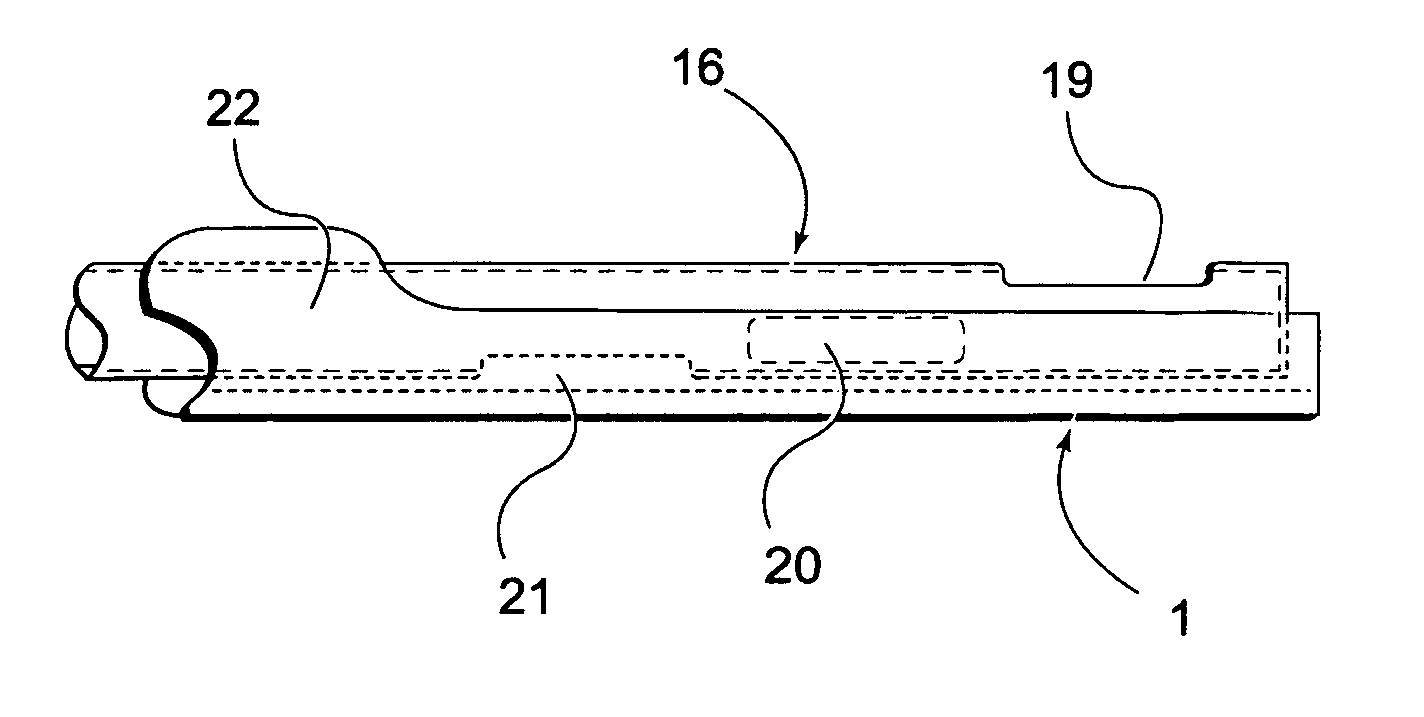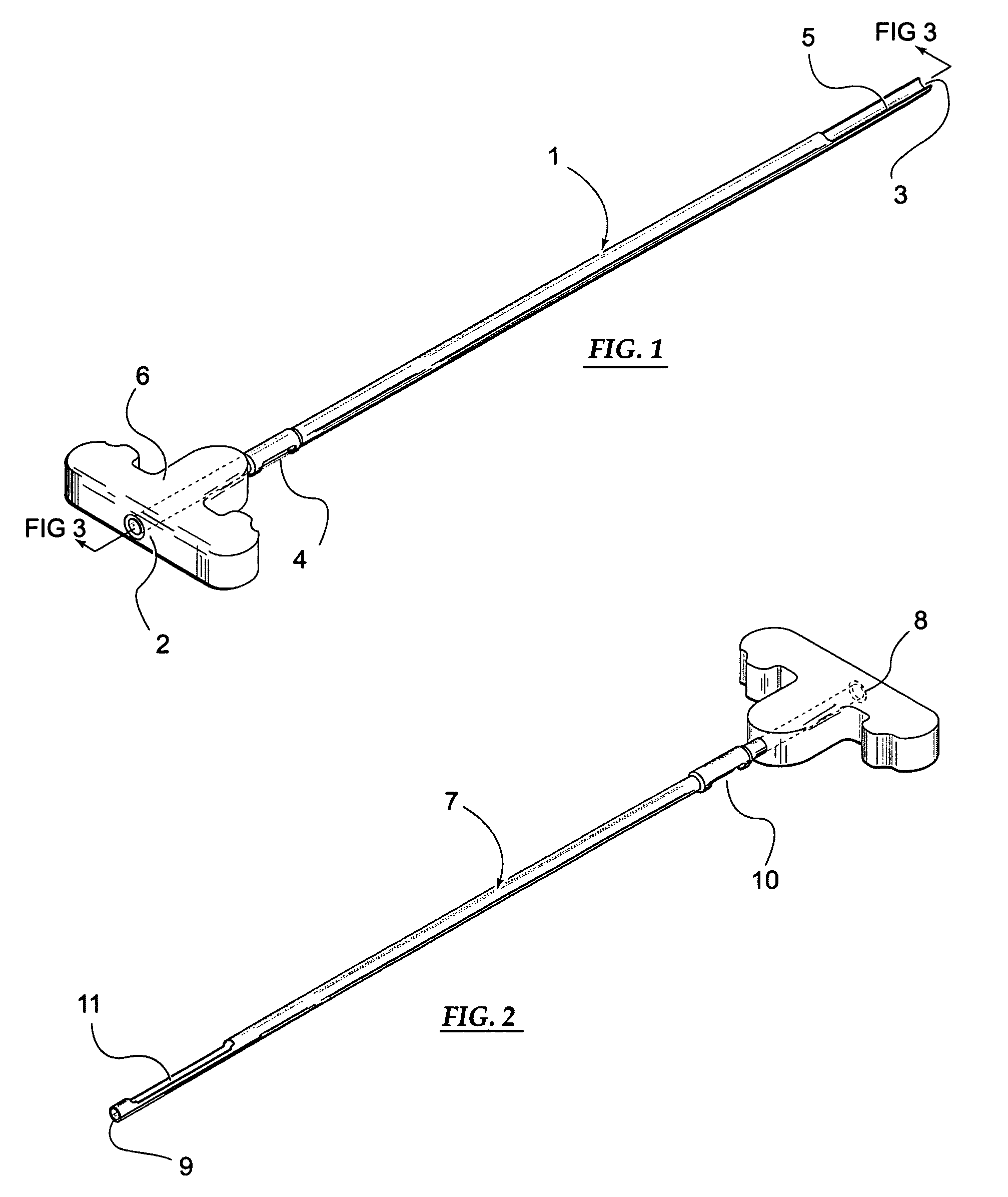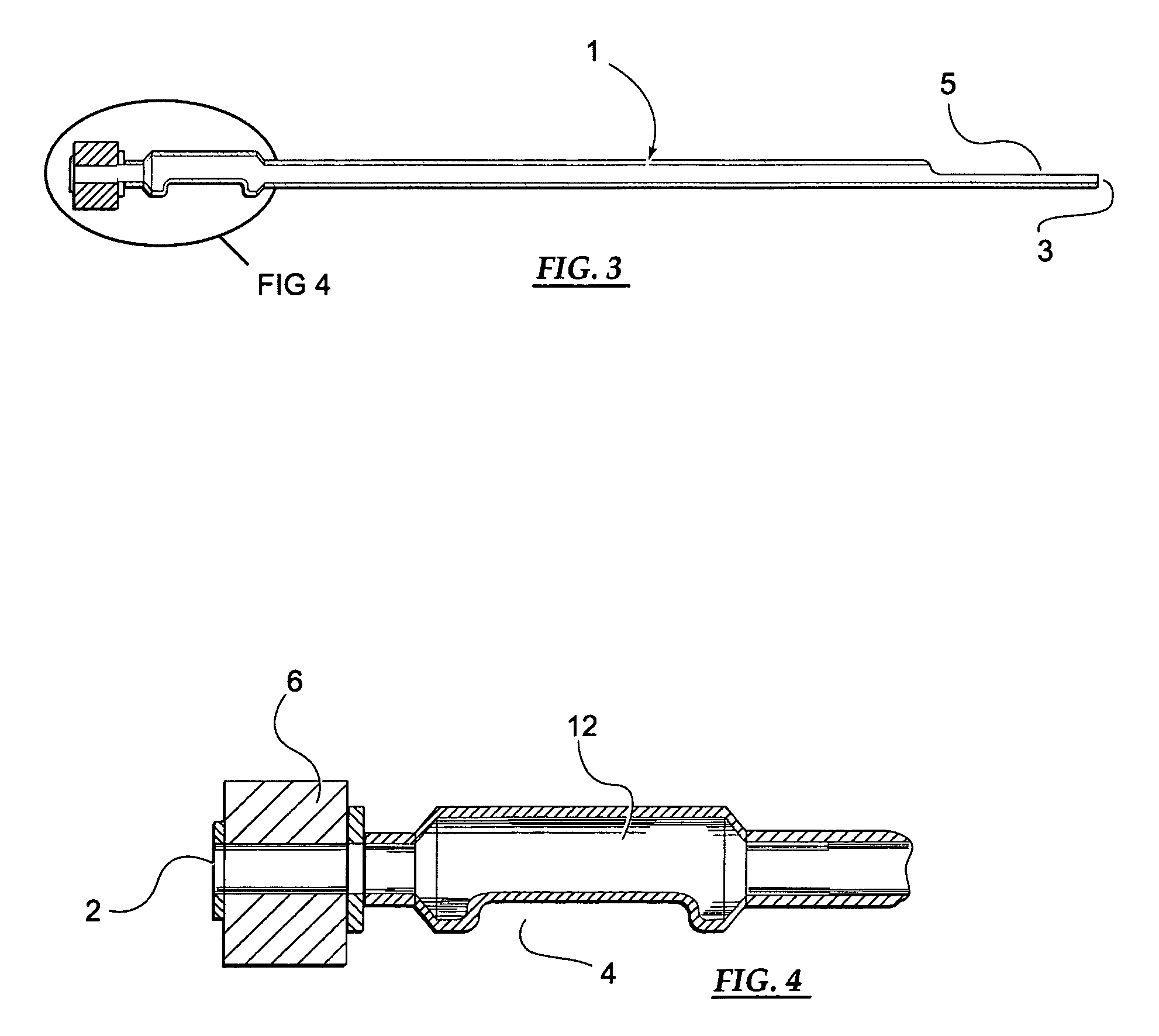Device and method for introducing flowable material into a body cavity
a technology of flowable materials and body cavities, applied in the field of percutaneous vertebroplasty, can solve the problems of serious reduction in quality of life, constant pain, and severe limitation of activity
- Summary
- Abstract
- Description
- Claims
- Application Information
AI Technical Summary
Benefits of technology
Problems solved by technology
Method used
Image
Examples
Embodiment Construction
[0052]For the purposes of the invention described in this application, the certain terms shall be interpreted as shown below.[0053]The term ‘cannula’ describes a slender hollow tube or pipe of circular cross-section, used in medical procedures, wherein it is designed to be insertable into a body cavity, duct or vessel. During the insertion of the cannula, the lumen (interior) is often occupied by a trocar as a stiffening means. In orthopedic procedures such a device is commonly referred to as a bone needle.[0054]The term ‘trocar’ describes a surgical tool, instrument or device used to puncture and cut through body tissue comprised of a sharply pointed solid or hollow shaft, wherein the point can have any functional geometry such as conical, pyramidal, blade-like, drill-like, etc. A trocar is often deployed within a cannula and functions as a portal for the subsequent placement of other devices. It is also commonly referred to in medical literature as a stylet.[0055]The term ‘osteoto...
PUM
 Login to View More
Login to View More Abstract
Description
Claims
Application Information
 Login to View More
Login to View More - R&D
- Intellectual Property
- Life Sciences
- Materials
- Tech Scout
- Unparalleled Data Quality
- Higher Quality Content
- 60% Fewer Hallucinations
Browse by: Latest US Patents, China's latest patents, Technical Efficacy Thesaurus, Application Domain, Technology Topic, Popular Technical Reports.
© 2025 PatSnap. All rights reserved.Legal|Privacy policy|Modern Slavery Act Transparency Statement|Sitemap|About US| Contact US: help@patsnap.com



